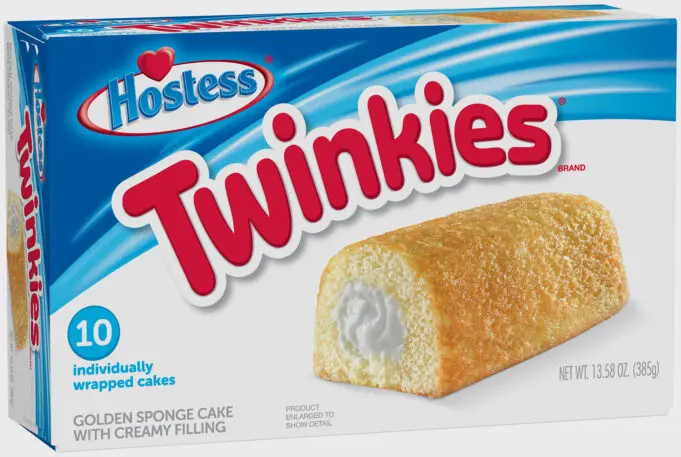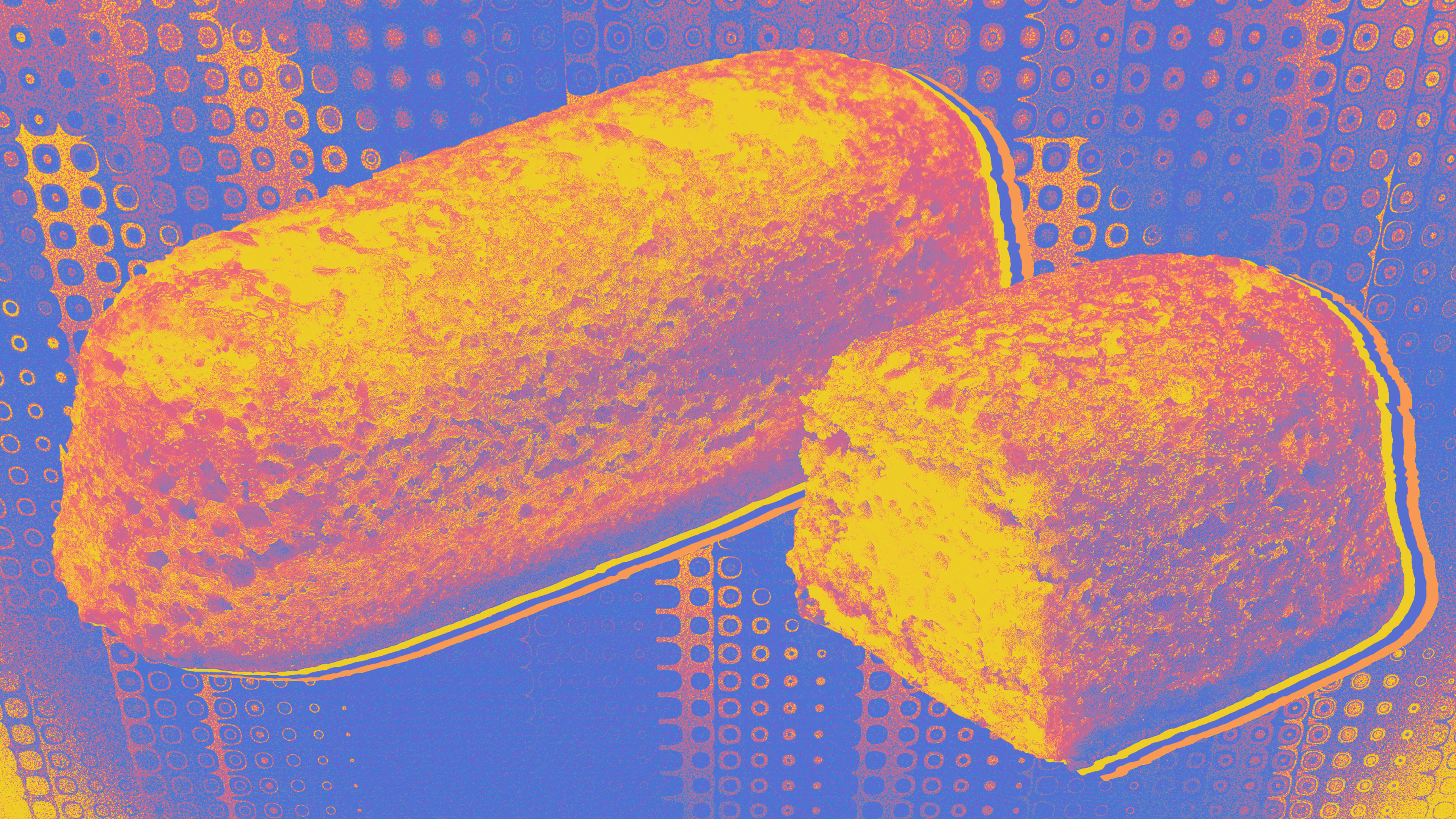Branded is a weekly column devoted to the intersection of marketing, business, design, and culture.
Ten years ago this month, an American crisis lifted: Twinkies returned to store shelves.
That little oblong, sponge-cakey treat with the “creamy” filling was absent from the U.S. market for about eight months, after its corporate owner, Hostess Brands, liquidated and ceased production of all its iconic snacks in 2012. “Hostess Brands’s announcement that it will go out of business sent shock waves through the country,” according to a Los Angeles Times report from that time, “as Americans began hoarding Twinkies and Ding Dongs and bemoaning their fading childhoods.”
Perhaps that language implied a bit of a wink-wink, but there was no doubt that (all healthy-eating trends aside) the country was simply not ready for a post-Twinkies America. The Twinkie has “been loved by consumers for decades and generations,” says Dan O’Leary, the current chief growth officer at Hostess. And indeed, July 13 marks the 10th anniversary of the famous confection’s return to the U.S. marketplace—and one of the more notable second acts in the history of classic American junk food.
The Twinkies 1.0 era dates back to 1930, a creation of James A. Dewar for Continental Baking, best known at the time as the maker of Wonder Bread. Dewar was manager of a plant specializing in strawberry shortcakes, which were limited to strawberry season. So Dewar came up with the idea of cream-filled shortcakes instead. A big hit, they developed into a ubiquitous snack staple in post-World War II America and beyond. A quintessential mass-market product, the Twinkie was convenient, consistent, and, with its molded shape and injected cream-like filling, vaguely industrial.
Continental Baking went through a variety of corporate arrangements, owned in turn by telecom giant ITT and pet food maker Ralston Purina. In the 1990s, it was sold to Interstate Bakeries Corporation. Over the following decade, changing tastes, diets, and health priorities started eating into Twinkie sales (and those of other processed goods that were Continental’s, um, bread and butter). In 2004, as one Twinkies timeline put it, “Interstate succumbed to the low-carb Atkins and South Beach Diets, filing for Chapter 11 bankruptcy protection.”
Interstate emerged from bankruptcy in 2009, renamed as Hostess. It was back in bankruptcy court three years later. Leaders blamed union demands; employees blamed management’s failure to modernize. This time, Hostess liquidated, closing its U.S. plants, laying off its more than 18,000 employees—and ceasing production of Twinkies and the rest of its snack repertoire, including Ding Dongs and its flagship Hostess CupCakes, as well as Wonder and other baked goods.
By then, Twinkies had become almost as familiar as a symbol of the food-industrial complex as a tasty snack. “For years, health-food advocates and nutritionists have heaped scorn on the Twinkie for its empty calories, its high sugar and fat content, and its artillery of preservatives and artificial ingredients,” the New York Times noted in what amounted to a Twinkie obituary.
Still, the company was producing a reported 500 million Twinkies a year when Hostess shut down. And people freaked out, snapping up Twinkies and other Hostess goodies; and in some cases, even trying to sell snack stashes on eBay. There was, in short, a bet to be made: Snacks aren’t over, and Twinkies are forever.

Sure enough, the remnants of Hostess (including its intellectual property and recipes) were bought in 2013 by private equity firms Apollo Global Management and Metropoulos & Co. for around $410 million. The new buyers had no appetite for the bread business, making a pure play for the snack brands. Soon, the mostly unchanged Twinkie returned to a burst of nostalgic publicity and the slogan, “The Sweetest Comeback In The History Of Ever,” although some criticized its reliance on an extremely slimmed down (and nonunionized) workforce. At the same time, Hostess made improvements to its distribution and other fixes. In 2016, it went public in a transaction involving another private equity firm, Gores Group; a sweet outcome for the new owners—less so for the thousands of employees who lost their jobs. Hostess (ticker symbol: TWNK) is today worth about $3.3 billion.
And nobody is worried about Twinkies going away anytime soon. “Snacking is a growing occasion,” says Hostess’s O’Leary. That reflects a broader evolution in eating habits—smaller meals, but more snacks. “If you think of what’s different today than 10 years ago, the number of times consumers choose a snack throughout the course of their day is just higher.” Alongside high demand for weight-loss drugs like Ozempic, overall snack sales rose 11% last year alone, and analysts say both the pandemic and inflation have contributed to this “snack-ification” of the American diet. And many, O’Leary argues, adopt what he calls “a balance sheet” approach: “What that means is if I’m gonna have two, three, four, whatever number of snacks a day, I think of it as like a portfolio.” Sometimes, he says, that means choosing something “a little bit more indulgent,” and other times, something that seems “a little bit healthier.”
As O’Leary notes, the number of sweet snacks is growing faster than total snacks on America’s balance sheet. And the iteration of Hostess now marking this 10th anniversary has positioned itself to compete for that spot on the snacker’s balance sheet: Aside from its Donettes, CupCakes, and Twinkies (its three top products, in that order), it has steadily expanded its own treat portfolio, with products like Kazbars (a bar-format take on the gooey Hostess style), Baby Bundts, and Bouncers (bite-size iterations of the Twinkie and other Hostess offerings). And notably, Hostess has also broadened its palate by acquiring Voortman, a leading maker of sugar-free cookies.
Altogether, according to the company, Hostess has seen its product sales grow at more than 12% a year over the past five years. Today, it produces 400 million Twinkies a year—not Peak Twinkie, but clearly proof that the iconic treat remains relevant in a snackier world. Snacks can be an impulsive category, as O’Leary points out, with a lot of choices.
So, a familiar, even nostalgic, brand matters—and Hostess has exploited that with wide distribution and plenty of in-store marketing displays. Today’s Hostess is a profitable business, albeit a more-focused one with fewer factories and a smaller workforce of about 3,000 employees, a drastic reduction from its heyday. As for the Twinkie, its future looks sweetly secure. For all its complicated history, it has evolved into a curious thing: a comfort indulgence.
Recognize your brand’s excellence by applying to this year’s Brands That Matter Awards before the final deadline, June 7.
Sign up for Brands That Matter notifications here.
